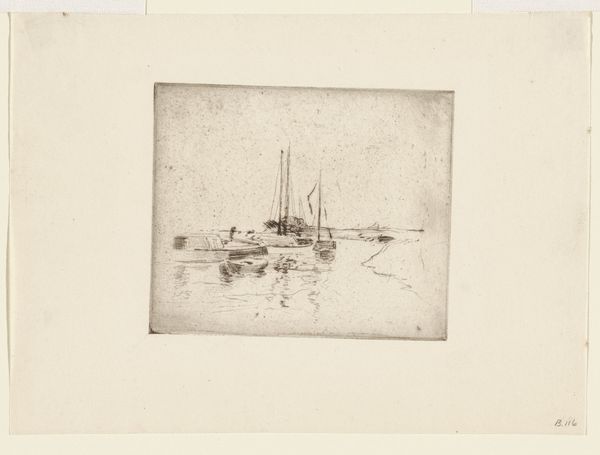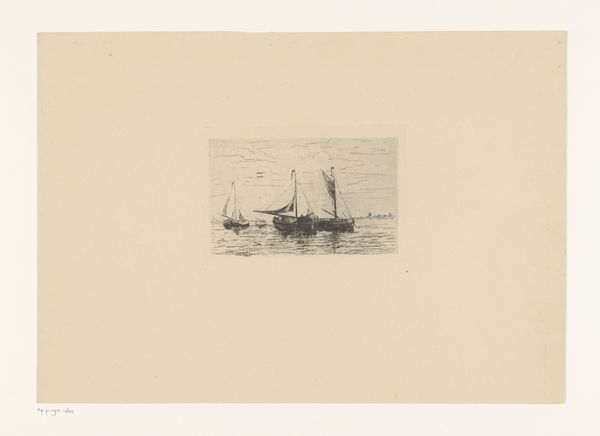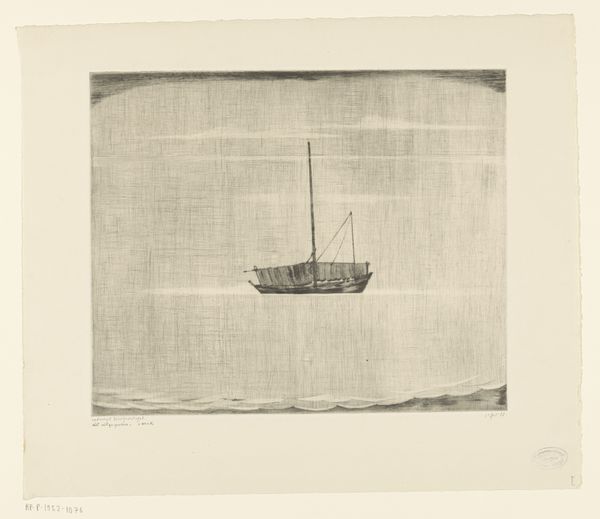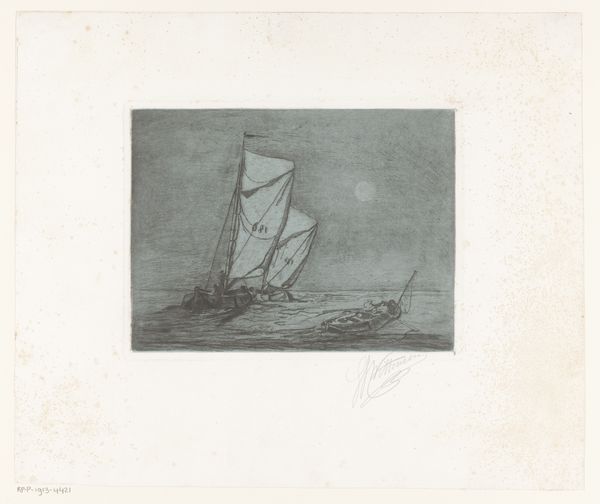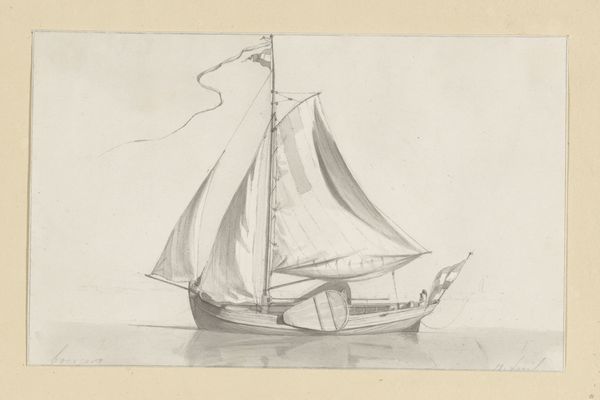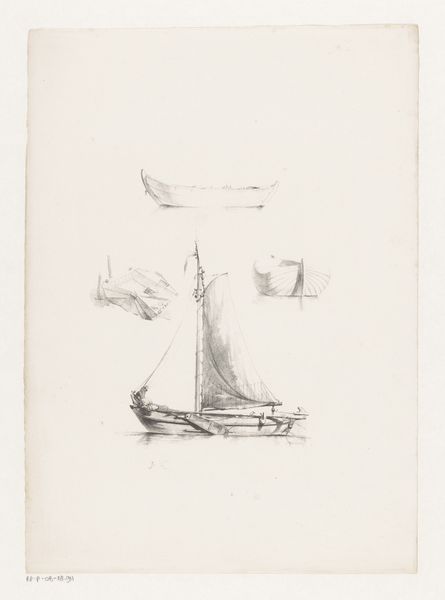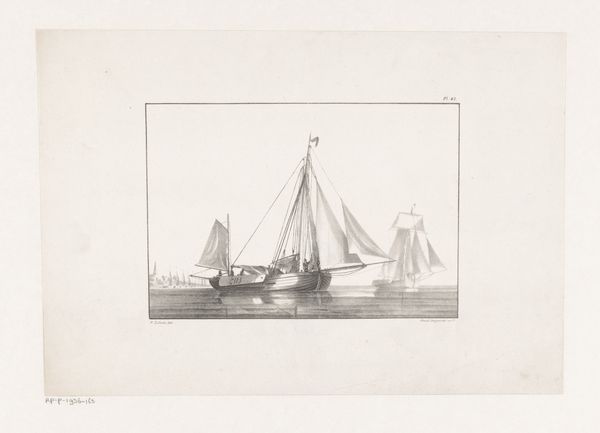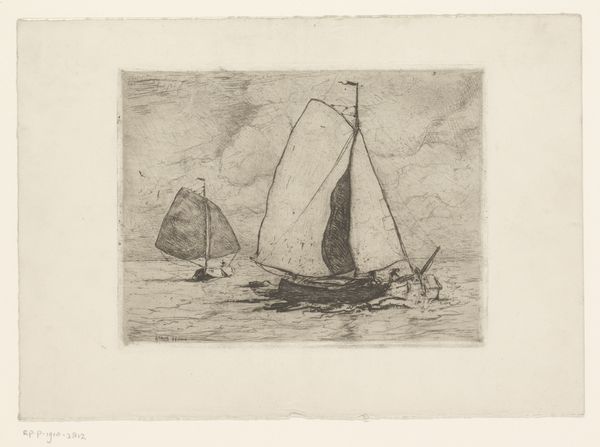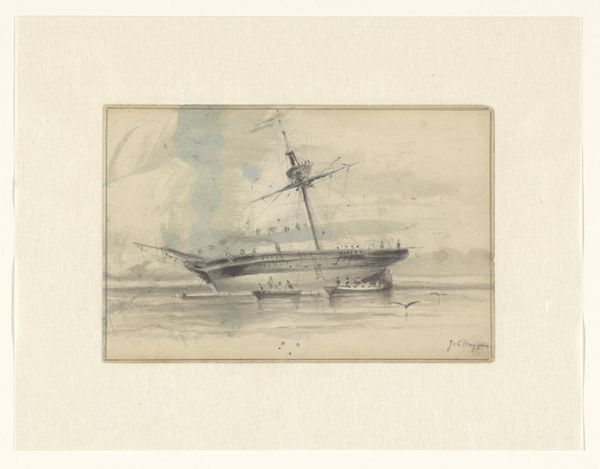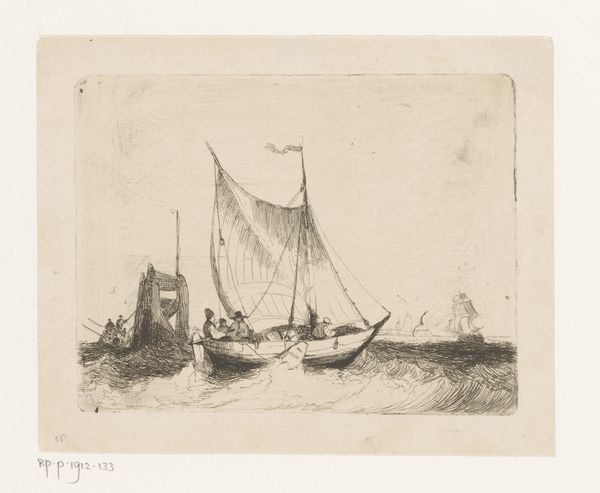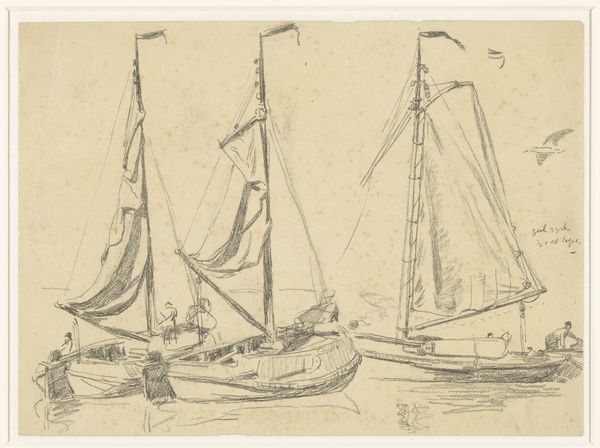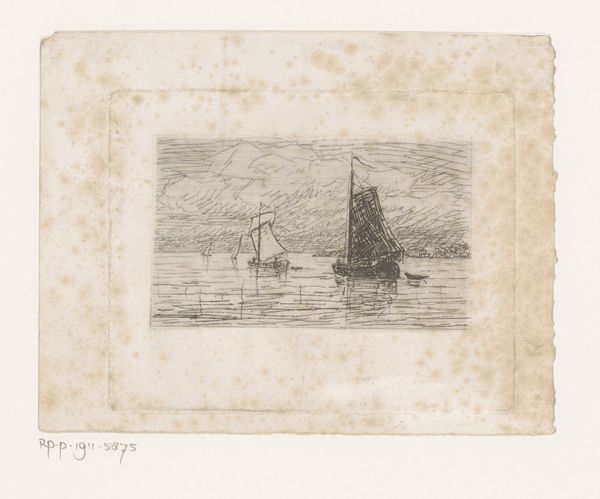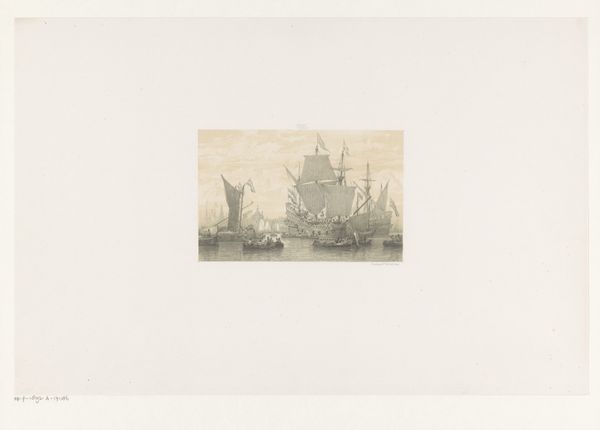
drawing, pencil
#
pencil drawn
#
drawing
#
light pencil work
#
pencil sketch
#
landscape
#
pencil
#
pencil work
#
genre-painting
#
realism
Dimensions: height 98 mm, width 108 mm
Copyright: Rijks Museum: Open Domain
Curator: Here we have Johannes Huygens's "Zeilend vissersschip," or "Sailing Fishing Boat," which he produced sometime between 1843 and 1911. It's a pencil drawing currently held here at the Rijksmuseum. Editor: There's a compelling immediacy to this sketch. It feels almost like a fleeting impression captured during a moment on the water. The movement, especially, is very evocative. Curator: Indeed. Consider how this work exists within a broader discussion around the depiction of labor. The artist is documenting the realities of work on the sea, reflecting the societal interest in these activities during this period. It gives voice to the labor involved in marine work. Editor: It makes me consider the romanticization of maritime life at the time, but does this drawing truly portray their lived experiences, or does it offer another view framed through an elite perspective? Is Huygens partaking of, and perhaps promoting, that very ideal? Curator: That's an essential point. We have to look at who this work might have been created for. Was it meant to capture the raw existence of the fishermen, or for a patron who wanted to bring the sublime into their parlour? What does the sketch say about labor's relation to leisure? Editor: Even the choice of pencil lends itself to an immediacy that almost positions it as preliminary or personal work. Did Huygens intend for the drawing to stand as the final piece, or serve merely as a step for later work? Curator: And who, ultimately, does it serve? We can investigate how this relatively small drawing intersects with larger economic and political conversations from the late 19th century. By exploring its role in documenting and, potentially, shaping our understanding of the maritime culture during this time, and how it fits into the contemporary perspective. Editor: It brings the artwork and those that view it face-to-face. Thanks for giving context for us to pause, reflect, and respect its cultural contribution. Curator: A single artwork always connects to complex cultural narratives. Thanks for joining me as we highlighted some points to consider with Huygens's beautiful work.
Comments
No comments
Be the first to comment and join the conversation on the ultimate creative platform.
